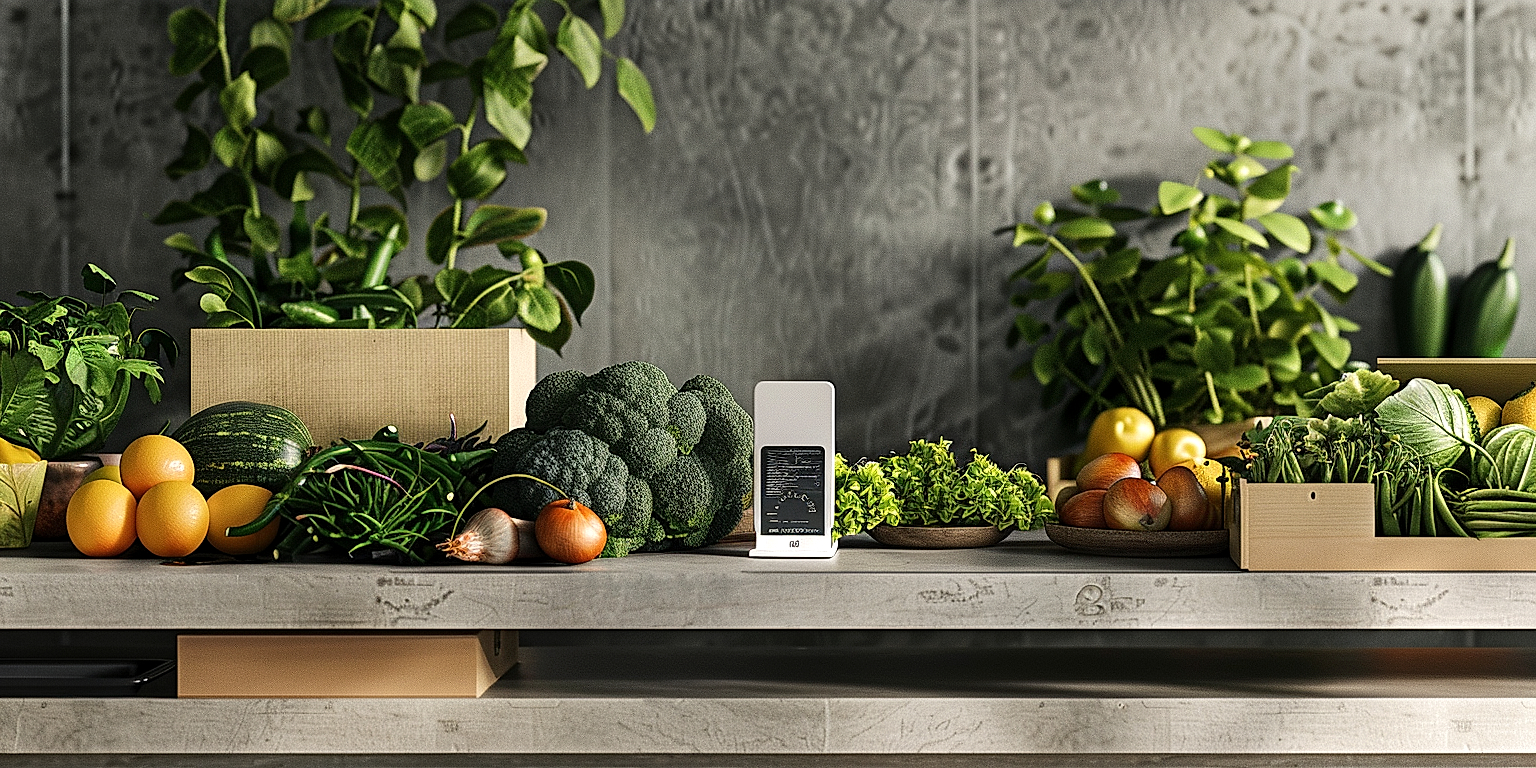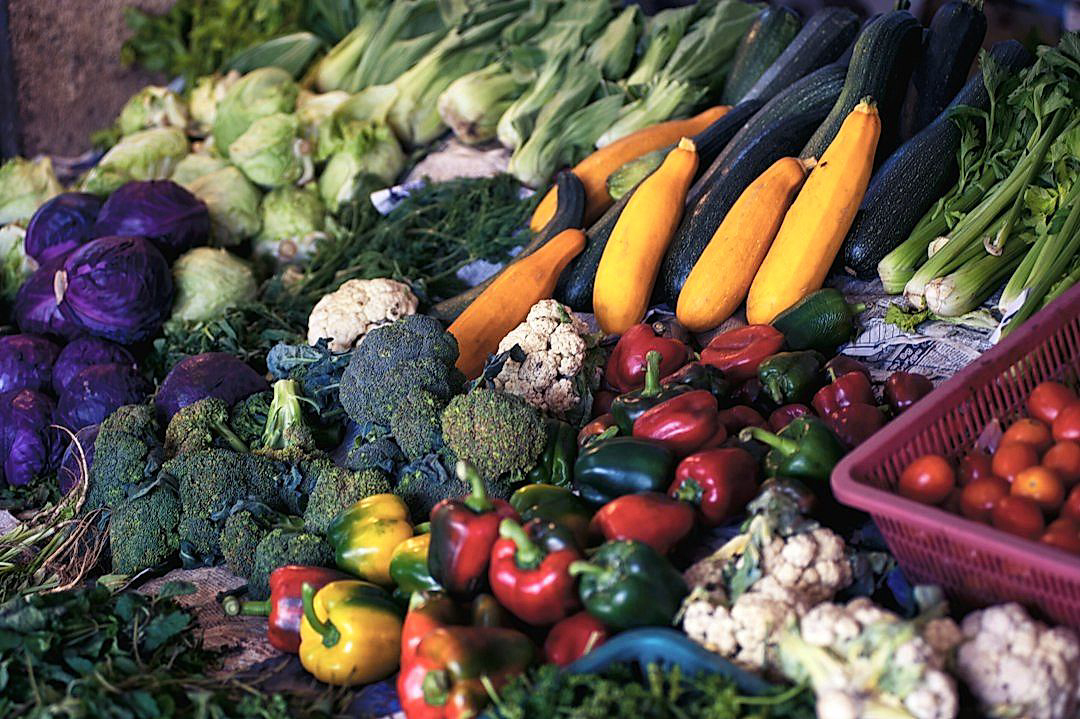Preserving the quality of fresh produce remains a critical focus element within the retail sector.
This has a direct impact on food safety, waste reduction, and overall customer satisfaction.
The increasing consumer demand for high-quality, fresh food items emphasizes the significance of these techniques.
However, these methods often entail a varied mix of approaches across the supply chain – from sourcing to storage.
Furthermore, technological advancements are continuously offering innovative ways to maintain and even enhance produce quality.
This blog aims to delve into these methods, showcasing practical strategies retailers can implement.
Techniques For Preserving Produce Quality In Retail
1. Maintain optimal temperature and humidity levels
One of the primary ways to preserve the quality of produce in the retail environment is to maintain the optimal temperature and humidity levels.
Each fruit or vegetable variety has unique temperature and humidity requirements for optimal preservation.
By ensuring that these conditions are met, it is possible to drastically extend the shelf life of produce and maintain its nutritional quality and taste.
Produce that is kept in unsuitable conditions declines in quality rapidly, which will be noticeable to consumers and can lead to profit losses for retail businesses.
Different types of produce may require special temperature and humidity control settings, contributing to maintaining the quality of the produce as well as reducing food waste and enhancing customer satisfaction.
Besides, monitoring and control systems can help automate this process and maintain consistent environmental conditions.
Relative humidity, in particular, needs to be controlled as high humidity can support mold growth, which is detrimental to the produce quality.
On the other hand, low humidity can lead to dehydration of the produce, affecting its texture and appearance.
Furthermore, certain fruits and vegetables emit ethylene gas, which can accelerate ripening.
This aspect requires careful management to prevent premature ripening and spoilage, which can be achieved through effective ventilation strategies.
Careful management of both temperature and humidity is essential, not only from the point of preserving the quality of the produce but also ensuring food safety.
Some bacteria and pests can thrive in warm and humid conditions, so keeping produce cool can help to minimize these risks.
Investing in high-quality refrigeration equipment that allows for precise control over temperature and humidity is a sound business decision for any retail establishment selling fresh produce.
Minor adjustments in this area can lead to significant improvements in the overall quality and freshness of the produce on display.
In conclusion, maintaining optimal temperature and humidity levels is a fundamental component of produce preservation strategies in the retail environment.
2. Regularly Rotate and Restock Fresh Produce
Rotating and restocking fresh produce regularly is a crucial technique in maintaining its quality in a retail setting.
Having a rotation schedule not only helps in preserving the freshness of produce but also prevents the spoilage of fruits and vegetables that have stayed on the shelves for too long.
Most retail outlets follow a ‘first-in, first-out’ (FIFO) system.
This system involves placing the most recently received produce at the back, while moving the older stock to the front.
This ensures that the older stock is sold first, maintaining a cycle of freshness in the display area.
If the produce is not rotated and new produce is simply added to the existing pile, the older produce at the bottom risks being overlooked and spoiling, resulting in waste and reduced sales.
Moreover, customers prefer to buy fresh produce, and a well-stocked, fresh-looking display is more attractive and inviting.
Regular replenishment of stocks with fresh produce also helps to provide a broad and appealing variety of items to customers, enhancing their shopping experience.
Restocking practices should also include the removal of any spoiled, damaged, or over-ripe items.
This prevents the spread of disease and bacteria to other produce, as well as maintains an aesthetically pleasing display.
Implementing a regular cleaning schedule for the produce section is also beneficial in ensuring the quality and safety of the produce.
Staff training is equally important as knowledgeable employees will know how to handle and stock different types of produce appropriately.
The right balance between overstocking and understocking should be maintained to ensure freshness and avoid wastage.
In summary, regular rotation and restocking of fresh produce help in maintaining quality, reducing waste, increasing customer satisfaction and enhancing overall profitability.
3. Use Appropriate Packaging for Specific Produce
When it comes to preserving the quality of fresh produce in retail settings, one critical factor that retailers should not overlook is the importance of using appropriate packaging.
Selecting the right packaging can greatly extend the life of fruits, vegetables, and other perishable items, ensuring they maintain their best quality until they reach the consumer.
It’s important to remember that not all fruits and vegetables are alike, and therefore, should not be packed in the same manner.
For instance, apples require ventilated packaging to allow for gas exchange, while berries benefit from packaging that offers some humidity to prevent them from drying out.
Understanding the specific packaging needs of each type of produce is essential to prevent premature spoilage and to keep them fresh for the longest possible time.
Packaging also serves a practical purpose – it helps protect the produce from physical damage during transportation and while on display, reducing wastage from bruised and damaged goods.
Moreover, proper packaging can also deter pests from infesting the produce, thus enhancing their shelf life.
Note that, using environmentally friendly packaging solutions is not only good for the planet, but it can also be a great marketing tool as more and more consumers are becoming environmentally conscious.
The type of packaging chosen must also accommodate the display method used in-store.
If fruits and vegetables are displayed in chilled areas, |the packaging must be designed to withstand cold temperatures without compromising the quality of the produce.
Similarly, if produce is sold in bulk, the packaging needs to be sturdy enough to withstand the weight.
Beyond preserving produce quality, packaging plays a crucial role in marketing too.
The packaging design should highlight the freshness and quality of the produce, encouraging customers to make a purchase.
In summary, the role of packaging in preserving produce quality in retail is manifold – it protects the produce, extends shelf life, prevents damage and infestation, and serves as a marketing tool.
However, remember that the packaging is an extension of the product and therefore, it must reflect the quality of the produce inside.
4. Keep produce clean and free of pests.
In order to preserve the quality of produce in a retail setting, keeping the product clean and free from pests is of utmost importance.
Consumers expect to find their fruits and vegetables in a pristine condition free from dirt, grime, or signs of bug infestation.
Any evidence of these could quickly deter a potential customer and damage the reputation of the business.
Using safe, effective cleaning and pest control methods is essential for maintaining high-quality produce.
Therefore, it’s crucial to implement rigorous cleaning practices regularly.
These can involve simple actions such as using clean, sanitary storage bins or shelving for the produce and wiping down these containers frequently.
Another critical aspect of cleanliness involves the employee hygiene practices.
Workers handling the produce should be trained and reminded to wash their hands frequently and wear gloves when necessary.
Additionally, ensuring the general cleanliness of the store environment can help prevent problems before they manifest.
Regular sweeping and cleaning of the floors, counters, and other surfaces can significantly help to keep pests away.
Speaking of pests, retailers should have effective pest control measures in place.
These can range from electronic pest repellents to professional pest control services if necessary.
However, it’s crucial that any pest control methods used are safe for the produce and do not introduce harmful chemicals.
Caught early, most pest infestations can be controlled and eradicated without causing significant harm to the produce.
Last but not least, remember that keeping produce clean and free of pests not only enhances its appeal to shoppers but also extends its shelf life.
By ensuring that your store’s produce is kept in optimal conditions, you can guarantee that your customers are always met with fresh, high-quality fruits and vegetables whenever they shop.
5. Monitor Produce Quality and Remove Damaged Items
One of the most essential stages in maintaining the quality of fruits and vegetables in a retail setting is regular and thorough monitoring.
The quality of the produce, its appearance, taste, texture, and overall freshness, needs to be consistently observed and evaluated.
It is important to ensure that the produce on display is not only fresh but also visually appealing, as this can greatly affect customers’ purchasing decisions.
Furthermore, you need to identify and remove items that have gone bad or are damaged as they can negatively impact the quality and safety of the surrounding produce.
The presence of damaged fruits or vegetables can encourage the growth of mould or bacteria, and initiate the decay process in nearby items much quicker.
A clear process should be in place for removing these compromised items from the inventory and ensuring they do not end up in the customers’ shopping carts.
Regular inspections, preferably daily, should be performed to monitor the condition of the produce and detect any early signs of spoilage or damage.
These reviews should also include checking the internal conditions such as the temperature and humidity levels that the produce are stored in.
If the internal conditions are not optimal, it can significantly impact the shelf life and quality of the fruits and vegetables.
When removing damaged items, it is crucial to do so in a way that does not cause further harm or stress to the other pieces.
You should also remember to wash your hands and wear gloves to prevent any cross-contamination.
Another important aspect is training your employees on the appropriate method of handling and presenting the produce.
Proper orientation can decrease the rate of damage caused by improper handling, and increase the overall quality and appearance of the items on display.
It is also beneficial to maintain a good relationship with your distributors as they can guide you on the best practices for storage and display of their produce.
Remember, the ultimate goal of these practices is not just to maintain the freshness of the items, but also to give a positive shopping experience to your customers.
The Bottom Line
Accordingly, maintaining the utmost quality of fresh produce depends heavily on various decisive factors.
Stringent adherence to optimal temperature and humidity levels, ensuring regular rotation and restocking, using appropriate packaging specific to each type of produce, ensuring cleanliness and pest-free conditions, and constant quality monitoring are all integral to this process.
By carrying out these steps effectively, we can not only enhance the shelf-life and overall quality of fresh produce, but also minimize food waste, which benefits both consumers and producers alike.
Therefore, through these seemingly simple, yet influential practices, the possibility of enjoying perfectly fresh produce becomes a constant reality.




